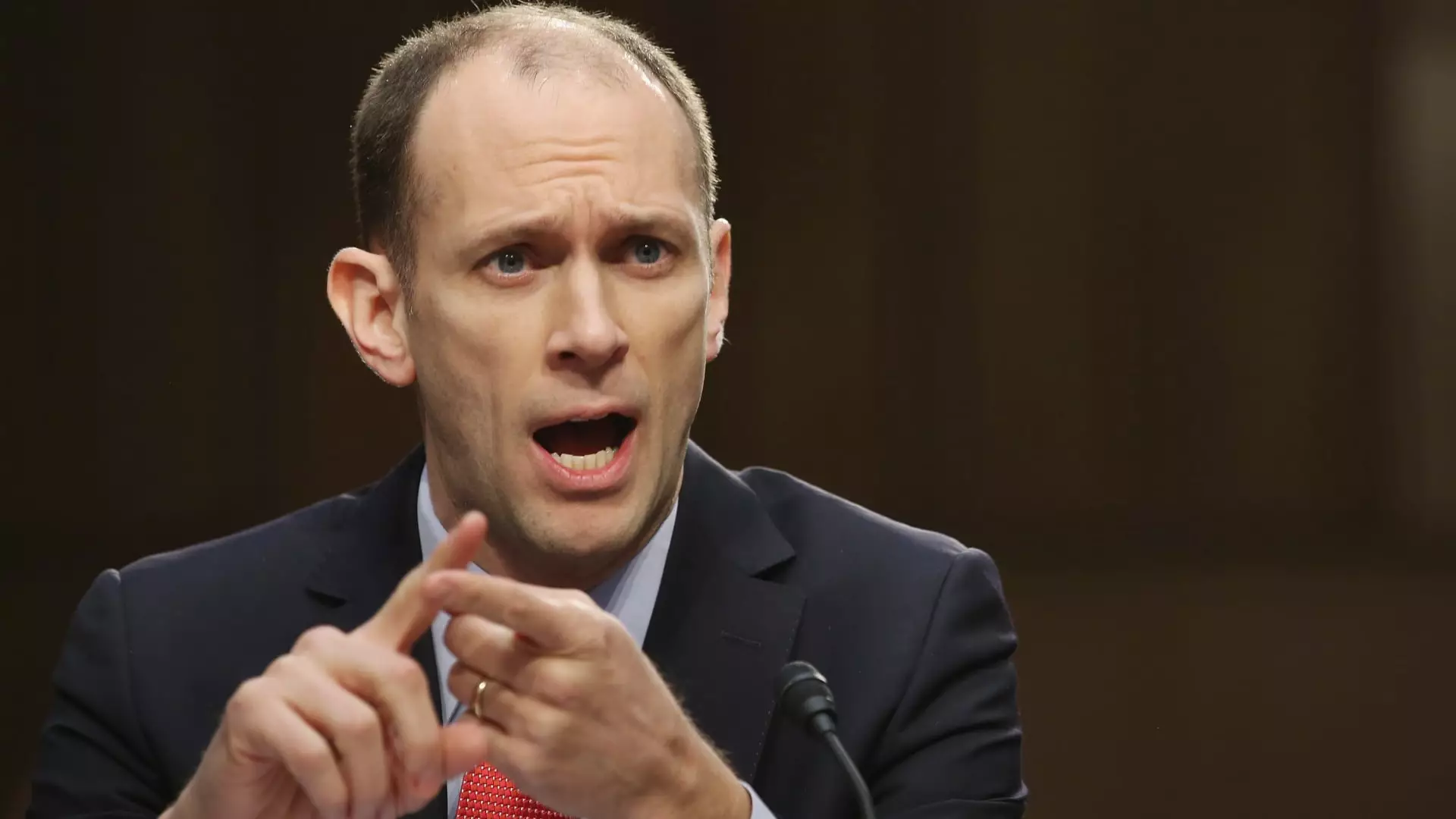As the U.S. economic landscape looms under a cloud of uncertainty, the central bank’s collective actions and statements play an increasingly pivotal role in shaping expectations for the future. Chicago Federal Reserve President Austan Goolsbee’s recent remarks underscore the precarious tightrope walked by policymakers in an economic climate fraught with complexities and unpredictability. His predictions of potential interest rate cuts, however cautious, are laden with implications that deserve nuanced exploration.
The Tariff Tug-of-War
Tariffs have become the bane of many business leaders, casting shadows over capital expenditures and future investments. Goolsbee’s acknowledgment of rising concerns about the impacts of tariffs signals an alarming trend: decision-makers are wrestling with a climate where fiscal policy dictates not just balance sheets but also the broader economic narrative. Businesses are holding back, adopting a wait-and-see approach to major projects as uncertainties fuel hesitation and skepticism. This pause not only stalls immediate economic activity but risks propelling us toward a sluggish economy, stifling innovation, and job creation. Tariffs, often touted as a tool for protecting domestic industries, may instead be choking the very growth they aim to foster.
The Dilemma of Interest Rates
While Goolsbee expresses optimism for future rate cuts, his comments convey a palpable tension: the Fed is not merely reactive but rather entangled in complex machinations that govern inflation and growth. The juxtaposition of falling rates with rising inflation presents a dichotomy that challenges traditional monetary policy. New York Fed President John Williams echoed this sentiment, pointing to a cacophony of conflicting data that makes the future appear hazy. With economic indicators pointing in various directions, the Fed’s decision-makers must grapple with mounting pressure and risk alienating both markets and constituents. The inflationary concerns are not hyperbolic, yet the unemployment rate hovers low, creating a dissonance that is difficult to navigate.
Stagflation: A Ghost from the Past?
The specter of stagflation—a term replete with historical weight—rears its head in discussions but requires careful scrutiny to avoid hasty conclusions. Goolsbee’s distinction between the current landscape and the notorious stagflation of the 1970s is a salient point; contemporary conditions, while troubling, do not wholly echo that era. Although rising tariffs may introduce stagflationary pressures by raising prices, the underlying economic fundamentals differ significantly. A low unemployment rate paired with moderate inflation calls for a nuanced analysis, moving beyond sensational narratives that risk misinforming the public and policymakers.
The Unwritten Rules of Policy Uncertainty
The blanket of uncertainty cast over the current economic situation has elevated discussions around the Fed’s communication strategies. Goolsbee and Williams’s remarks highlight a palpable anxiety that permeates the markets, yet one needs to question whether this communication is enough. The Federal Open Market Committee’s repeated articulation of uncertainty could, paradoxically, foster an environment of instability. As Chair Jerome Powell finds himself employing the term “uncertainty” repetitively, we must ponder: is such transparency empowering, or does it invite further doubt? The challenge lies in effectively conveying critical economic realities without triggering erratic investor behavior.
Rethinking the Future: Caution vs. Confidence
As we speculate about the Fed’s trajectory, the juxtaposition between the cautious optimism of rate cuts and the looming specter of economic pessimism underscores a unique paradox. The financial markets are already pricing in aggressive rate cuts, meaning the Fed may face formidable challenges should inflation persist beyond anticipated levels. Investors, businesses, and consumers alike are navigating uncharted waters, adapting their strategies to the shifting sands of macroeconomic policy. It’s essential for the Fed to not only react to data but to influence perceptions; fostering stability must become a priority, lest we find ourselves ensnared in the pitfalls of an uncertain future.
While there are indications of caution from the Federal Reserve regarding future interest rates, the broader implications of their decisions, combined with external factors like tariffs and public anxiety, produce an intricate tapestry that is anything but straightforward. The tension between economic indicators, policy intentions, and market expectations could indeed redefine the economic fabric of the nation in unforeseen ways.



Leave a Reply